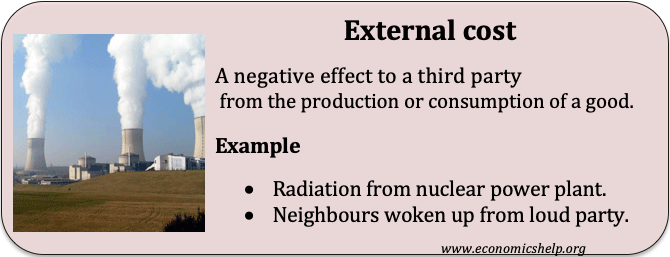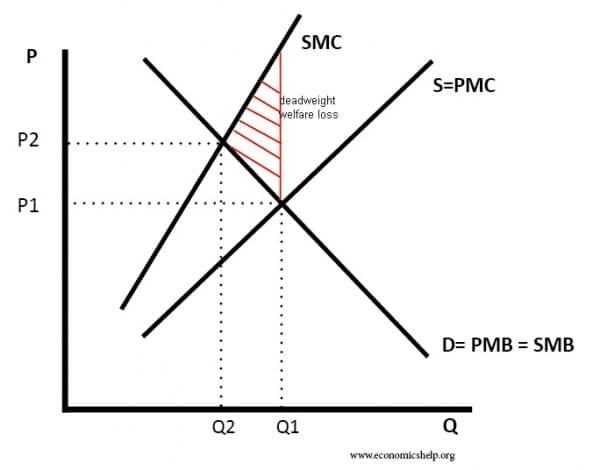Definition of External costs
- An external cost occurs when producing or consuming a good or service imposes a cost (negative effect) upon a third party.
- If there are external costs in consuming a good (negative externalities), the social costs will be greater than the private cost.
- The existence of external costs can lead to market failure. This is because the free market generally ignores the existence of external costs.
- External marginal cost (XMC) the cost to a third party from the consumption/production of one extra unit.

Example of External Cost
Driving a car imposes a private cost on the driver (cost of petrol, tax and buying car). However, driving a car creates costs to other people in society. These can include:
- Greater congestion and slower journey times for other drivers.
- Cause of death for pedestrians, cyclists and other road users.
- Pollution, health-related problems.
- Noise pollution.
Example of Production External Cost
- Producing electricity from burning coal leads to air pollution and acid rain.
- Producing chemicals can cause pollution to air and water.
Diagram of external cost
This diagram shows how the existence of external costs will cause the social marginal cost to be greater than the private marginal cost. Therefore, in a free market, there will be the overconsumption of the good (Q1). Social efficiency will occur at Q2 where SMC = SMB
More examples of external cost
- Playing loud music creates cost to your neighbours who are kept awake
- Drinking alcohol and then driving places other road users at risk of an accident.
- Smoking in an enclosed space causes passive smoking health risks to others in the room.
- Building a new road causes a cost to the lost environment and increase in pollution for those living nearby.
Related concepts
- Demerit Goods (note external costs doesn’t necessarily mean it a demerit good)
- Social costs
- Negative Externality


